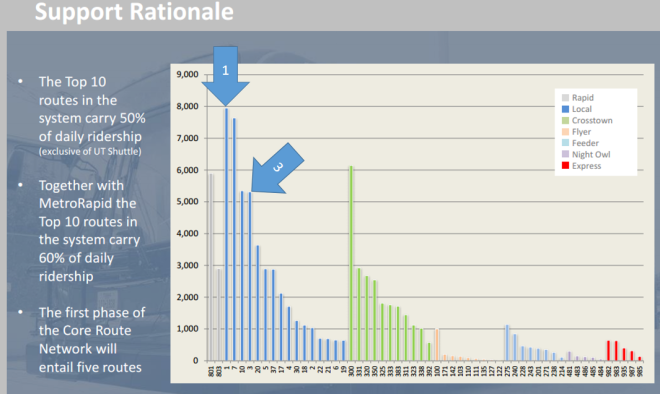This post was contributed by a reader who frequently rides Capital Metro.
Rapidly declining
The much-heralded “Metro Rapid” BRT service further screwed up the mobility of myself and other Austinites who are totally dependent upon public transit.
Ironically, I had initially supported the Metro Rapid launch.
Yes, it’s true. I attended the ground breaking ceremony at Chinatown. I was excited about a weekend 101 finally realized. Ever since the agency began charging people with disabilities fare money, I was looking for a fast way to get downtown on the weekends. I believed that this was the answer.
I should have been careful what I wished for.
Because consultant Nancy R Edmonson was a former Capital Metro employee, the then-board never questioned her insistence that fares had to be ‘simplified’ through creation of an entirely ‘new’ category?? They robotically adopted it without question. “Of course” the agency would make tons of EASY money—Nancy said so.
Right!!
Desperate pleas from myself and other frequent riders who use the bus most often were ignored. Private car riders could not be forced onto public transit vehicles from their own.
Short changing their most reliable riders to chase imaginary constituents was a foolish game which Capital Metro and two of it’s then-board members (incidentally in elections) lost.
They were blissfully oblivious to how Metro Rapid hurts Austin area communities who are dependent upon public transportation.
In a twist of irony, the masses cannot afford the new premium affairs on Social Security—or even our salaries. And the subsequent reduced frequency of heavily-utilized local routes further make effective mobility timing difficult.
People most needing to use public transit for our mobility (such as people with disabilities, low-income and/or the elderly) have to now wait for hours on end for their bus route.
People choose the most affordable and physically accessible public transit option. We’re not sitting at a bus stop for 3 hours to ‘party’ or because we want to make “new friends” with whoever else is also stranded.




